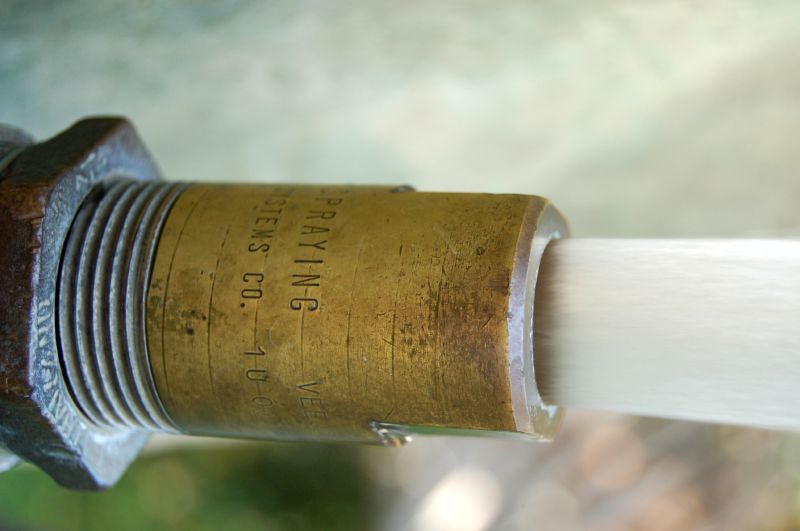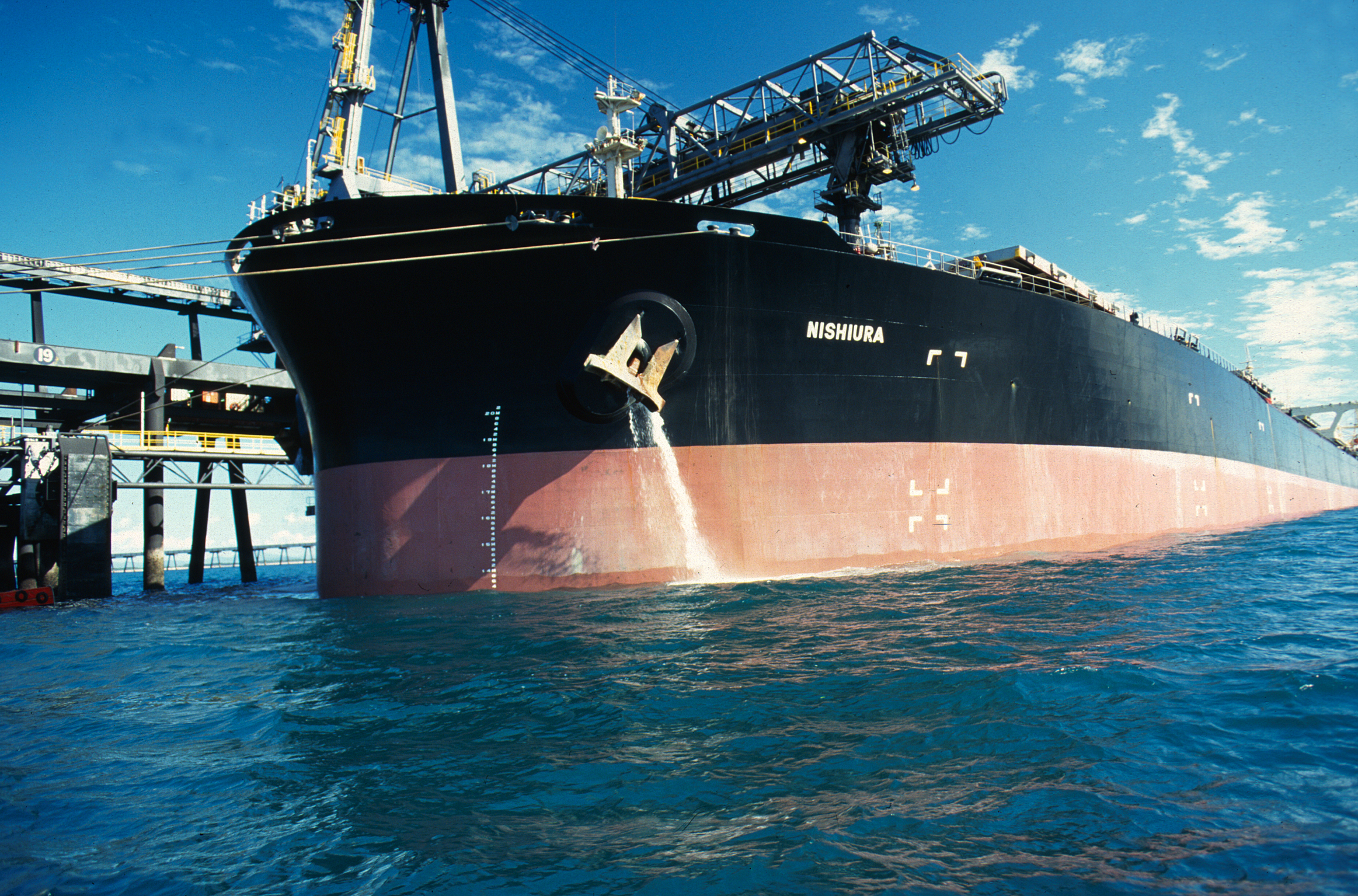|
Crude Oil Washing
Crude oil washing (COW) is the process of washing out residue from oil tankers using the crude oil itself. After the oil tankers have been emptied, crude oil is pumped back and preheated in the slop tanks, then sprayed back with high-pressure nozzles in the cargo tanks onto the walls of the tank. Due to the stickiness of the crude oil, it clings to the tank walls, and such oil adds to the cargo remaining on board. By washing the tanks with crude oil, the amount of cargo remaining on board is significantly reduced, and with the high value of oil, the financial savings are significant, both for the charterer and the ship-owner. If the cargo remaining on board is deemed as 'liquid and pumpable', then the charterers can claim from the owner for any cargo loss for normally between 0.3% up to 0.5%. It replaced the ''load-on-top'' and ''seawater washing'' systems, both of which involved discharging oil-contaminated water into the sea. MARPOL 73/78 made crude oil washing equipment mandato ... [...More Info...] [...Related Items...] OR: [Wikipedia] [Google] [Baidu] |
Oil Tanker
An oil tanker, also known as a petroleum tanker, is a ship designed for the bulk cargo, bulk transport of petroleum, oil or its products. There are two basic types of oil tankers: crude tankers and product tankers. Crude tankers move large quantities of unrefined petroleum, crude oil from its point of extraction to oil refinery, refineries. Product tankers, generally much smaller, are designed to move refined products from refineries to points near consuming markets. Oil tankers are often classified by their size as well as their occupation. The size classes range from inland or coastal tankers of a few thousand metric tons of deadweight tonnage, deadweight (DWT) to ultra-large crude carriers (ULCCs) of . Tankers move approximately of oil every year.UNCTAD 2006, p. 4. Second only to pipeline transport, pipelines in terms of efficiency,Huber, 2001: 211. the average cost of transport of crude oil by tanker amounts to only US. Some specialized types of oil tankers have evolved. On ... [...More Info...] [...Related Items...] OR: [Wikipedia] [Google] [Baidu] |
Crude Oil
Petroleum, also known as crude oil or simply oil, is a naturally occurring, yellowish-black liquid chemical mixture found in geological formations, consisting mainly of hydrocarbons. The term ''petroleum'' refers both to naturally occurring unprocessed crude oil, as well as to petroleum products that consist of refined crude oil. Petroleum is a fossil fuel formed over millions of years from anaerobic decay of organic materials from buried prehistoric organisms, particularly planktons and algae, and 70% of the world's oil deposits were formed during the Mesozoic. Conventional reserves of petroleum are primarily recovered by drilling, which is done after a study of the relevant structural geology, analysis of the sedimentary basin, and characterization of the petroleum reservoir. There are also unconventional reserves such as oil sands and oil shale which are recovered by other means such as fracking. Once extracted, oil is refined and separated, most easily by disti ... [...More Info...] [...Related Items...] OR: [Wikipedia] [Google] [Baidu] |
Nozzle
A nozzle is a device designed to control the direction or characteristics of a fluid flow (specially to increase velocity) as it exits (or enters) an enclosed chamber or pipe (material), pipe. A nozzle is often a pipe or tube of varying cross sectional area, and it can be used to direct or modify the flow of a fluid (liquid or gas). Nozzles are frequently used to control the rate of flow, speed, direction, mass, shape, and/or the pressure of the stream that emerges from them. In a nozzle, the velocity of fluid increases at the expense of its pressure energy. Types Jet A gas jet, fluid jet, or hydro jet is a nozzle intended to eject gas or fluid in a coherent stream into a surrounding medium. Gas jets are commonly found in gas stoves, ovens, or barbecues. Gas jets were commonly used for Gas lighting, light before the development of electric light. Other types of fluid jets are found in carburetors, where smooth calibrated orifices are used to regulate the flow of gasoline, fuel ... [...More Info...] [...Related Items...] OR: [Wikipedia] [Google] [Baidu] |
MARPOL 73/78
The International Convention for the Prevention of Pollution from Ships, 1973 as modified by the Protocol of 1978, or "MARPOL 73/78" (short for "marine pollution") is one of the most important international marine environmental conventions. It was developed by the International Maritime Organization with an objective to minimize pollution of the oceans and seas, including dumpingoil and air pollution The original MARPOL was signed on 17 February 1973, but did not come into force at the signing date. The current convention is a combination of 1973 Convention and the 1978 Protocol, which entered into force on 2 October 1983. As of January 2018, 156 states are parties to the convention, being flag states of 99.42% of the world's shipping tonnage. All ships flagged under countries that are signatories to MARPOL are subject to its requirements, regardless of where they sail, and member nations are responsible for vessels registered on their national ship registry. Provisions MA ... [...More Info...] [...Related Items...] OR: [Wikipedia] [Google] [Baidu] |
Deadweight Tonnage
Deadweight tonnage (also known as deadweight; abbreviated to DWT, D.W.T., d.w.t., or dwt) or tons deadweight (DWT) is a measure of how much weight a ship can carry. It is the sum of the weights of cargo, fuel, fresh water Fresh water or freshwater is any naturally occurring liquid or frozen water containing low concentrations of dissolved salt (chemistry), salts and other total dissolved solids. The term excludes seawater and brackish water, but it does include ..., ballast water, provisions, passengers, and crew. DWT is often used to specify a ship's maximum permissible deadweight (i.e. when it is fully loaded so that its Plimsoll line is at water level), although it may also denote the actual DWT of a ship not loaded to capacity. Definition Deadweight tonnage is a measure of a vessel's weight carrying capacity, not including the empty weight of the ship. It is distinct from the displacement (weight of water displaced), which includes the ship's own weight, or the ... [...More Info...] [...Related Items...] OR: [Wikipedia] [Google] [Baidu] |
Kyushu
is the third-largest island of Japan's Japanese archipelago, four main islands and the most southerly of the four largest islands (i.e. excluding Okinawa Island, Okinawa and the other Ryukyu Islands, Ryukyu (''Nansei'') Ryukyu Islands, Islands). In the past, it has been known as , and . The historical regional name referred to Kyushu and its surrounding islands. Kyushu has a land area of and a population of 14,311,224 in 2018. In ancient times, there is a theory that Kyushu was home to its own independent dynasty, where a unique, southern-influenced culture and tradition distinct from that of Honshu flourished. In the 8th-century Taihō Code reforms, Dazaifu (government), Dazaifu was established as a special administrative term for the region. Geography The island is mountainous, and Japan's most active volcano, Mount Aso at , is on Kyūshū. There are many other signs of tectonic activity, including numerous areas of hot springs. The most famous of these are in Beppu, ... [...More Info...] [...Related Items...] OR: [Wikipedia] [Google] [Baidu] |
Sailing Ballast
Ballast is weight placed low in ships to lower their centre of gravity, which increases stability (more technically, to provide a righting moment to resist any heeling moment on the hull). Insufficiently ballasted boats tend to tip or heel excessively in high winds. Too much heel may result in the vessel filling with water and/or capsizing. If a sailing vessel needs to voyage without cargo, then ballast of little or no value will be loaded to keep the vessel upright. Some or all of this ballast will then be discarded when the cargo is loaded. If a cargo vessel (such as a tanker, bulk carrier or container ship) wishes to travel empty or partially empty to collect cargo, it must travel "in ballast". This keeps the vessel in trim and keeps the propeller and rudder submerged. Typically, being "in ballast" will mean flooding ballast tanks with sea water. Serious problems may arise when ballast water is discharged, as water-borne organisms can create havoc when deposited in ... [...More Info...] [...Related Items...] OR: [Wikipedia] [Google] [Baidu] |
OILPOL Convention
The International Convention for the Prevention of Pollution of the Sea by Oil (OILPOL) was an International Treaty signed in London on 12 May 1954 (OILPOL 54). It was updated in 1962 (OILPOL 62), 1969 (OILPOL 69), and 1971 (OILPOL 71). OILPOL was subsumed by the International Convention for the Prevention of Pollution from Ships (MARPOL) in 1973. Since 1959, OILPOL is administered and promoted by the International Maritime Organization (IMO), which states: Great Barrier Reef incident On 3 March 1970, the Liberian crude oil tanker ''Oceanic Grandeur'' struck an uncharted rock in Torres Strait while en route from Dumai, Indonesia, to Brisbane. The incident resulted in a significant spill. Due to concern about the Great Barrier Reef The Great Barrier Reef is the world's largest coral reef system, composed of over 2,900 individual reefs and 900 islands stretching for over over an area of approximately . The reef is located in the Coral Sea, off the coast of Queensland, . ... [...More Info...] [...Related Items...] OR: [Wikipedia] [Google] [Baidu] |
Ballast Tanks
A ballast tank is a compartment within a boat, ship or other floating structure that holds water, which is used as ballast to provide hydrostatic stability for a vessel, to reduce or control buoyancy, as in a submarine, to correct trim or list, to provide a more even load distribution along the hull to reduce structural hogging or sagging stresses, or to increase draft, as in a semi-submersible vessel or platform, or a SWATH, to improve seakeeping. Using water in a tank provides easier weight adjustment than the stone or iron ballast used in older vessels, and makes it easy for the crew to reduce a vessel's draft when it enters shallower water, by temporarily pumping out ballast. Airships use ballast tanks mainly to control buoyancy and correct trim. History The concept of ballast tanks, inspired by nature, can be seen in aquatic life forms like blowfish and the argonaut octopus, which regulate their buoyancy to move and survive in water. Humans have adapted and refined thi ... [...More Info...] [...Related Items...] OR: [Wikipedia] [Google] [Baidu] |
Maritime Environmental Crime
Environmental maritime crime constitutes one of the key components of the broader domain of blue crime, and it describes and includes activities that detrimentally impact the marine environment. Its effects have had extremely deleterious impacts on marine life, both in terms of affecting marine ecosystems and the life quality of coastal citizens, with damages that are often not reparable.Becker-Weinberg, V. (2023). Recognition of Maritime Environmental Crimes within International Law: A New Global Paradigm for the Protection and Preservation of the Marine Environment. In F. M. Platjouw & A. Pozdnakova (Eds.), The Environmental Rule of Law for Oceans: Designing Legal Solutions (pp. 207–222). chapter, Cambridge: Cambridge University Press. Overview Environmental maritime crimes include activities such as illegal and unregulated fishing, fuel dumping, the discharge of residues, garbage, and sewages. These actions have had devastating effects on the marine environment, with for exa ... [...More Info...] [...Related Items...] OR: [Wikipedia] [Google] [Baidu] |





